Motorcycle Investor mag
Subscribe to our free email news
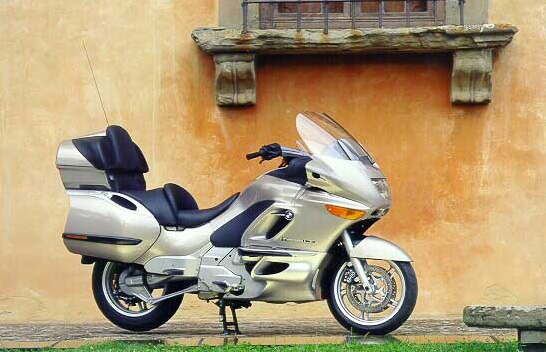
Super Lux
Profile: BMW K1200LT
(by Guy
‘Guido’ Allen, Mar 2022)
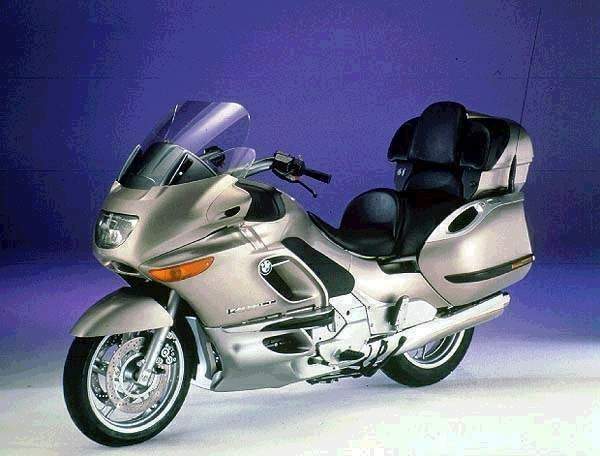
Germany’s Gold Wing challenger
Towards the
close of last century (it really doesn’t seem that long
ago!), BMW launched what it saw as a true challenger to
the mighty Honda Gold Wing and its then dominance of the
heavy tourer market.
Back in 1999,
your choices of premium kit in this class were clear:
either the 1500 Wing, or a Harley-Davidson Electra
Glide. Both, we might add, were formidable competition
and very capable pieces of machinery. While the Harley
wasn’t as quick in a straight line and tended to be a
little less tidy in the handling department, it had
other virtues. For example, street cred in spades, and a
lot of really well thought-out appointments which in
some cases were superior to the Honda offering.
Sure BMW made
good touring bikes and up to that point its class
challenger was the K1100LT. However the K didn’t quite
cut it in this company and wasn’t regarded as a direct
competitor.
That changed
with the launch of the K1200LT in 1999. Though still
running a variant of the laid-down inline four engine
platform, the package looked and felt substantially
larger than the 1100.
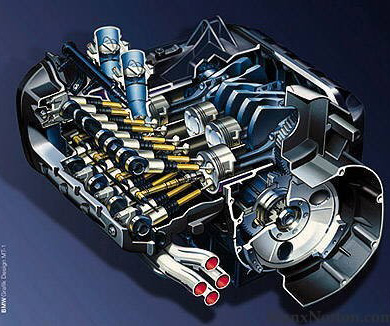
Basic stats
included an injected 1172cc 16-valve powerplant with
double overhead cams, claiming 98 horses (72kW) at
6750rpm and 115Nm at 4750. That meant it was producing
the same power as the 1100 but lower in the range, but
around eight per cent more torque again lower down the
rev range.
BMW persisted
with a five-speed transmission with Paralever shaft
drive, while the front end swapped over from a
conventional fork to the firm’s arguably superior
Telelever suspension/steering combo.

Weight was
pegged at 345kg dry (378 wet) and overall the stats were
competitive with the 1500 Wing. Power and torque were
roughly the same, while the weight was around 15kg
lower. Like the Honda, it featured a reverse driven by
the starter motor.
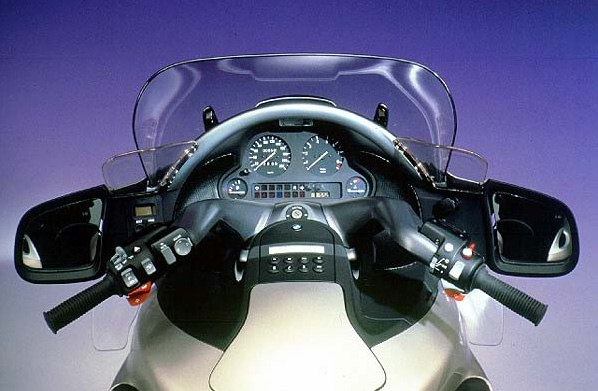
International
models came in three levels of equipment, however in
Australia we got one variant which was pretty close to
fully-loaded. That included anti-lock brakes, electric
windscreen, CD stacker and radio, cruise control, trip
computer, plus heated handgrips and seats. Plus of
course there was the full suite of integrated luggage.
That lot was initially priced at Au$32,200 plus on-road
costs (US$24,000, GB£18,500), which compared to an even
Au$30k for the Gold Wing.
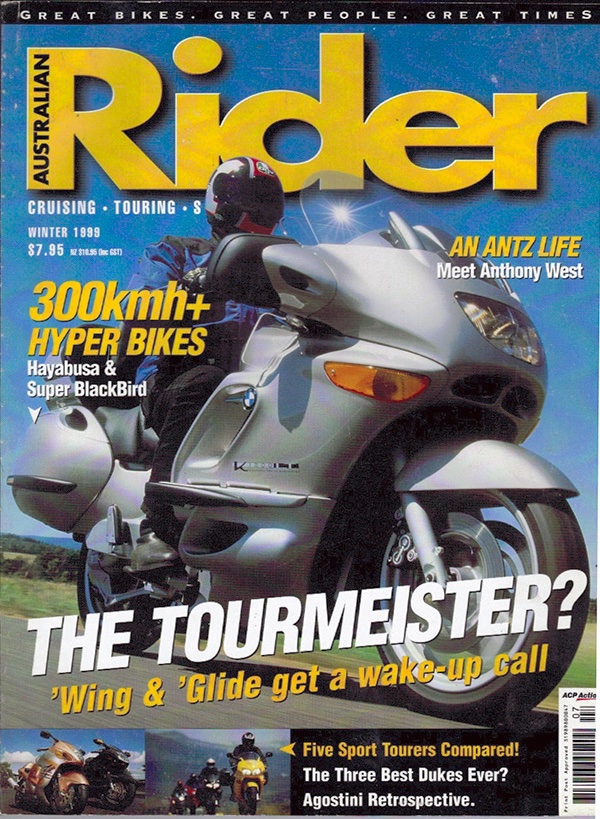
The
Australian media launch happened in the first half of
1999 and involved a ride from Melbourne to Adelaide for
one group of journos, and the return trip for a second
pack. You have to say it was a pretty good opportunity
to see what the new monster would do.
In short, it
impressed. Performance was good without being
arm-wrenching – as you’d expect, given the stats. It was
certainly capable of tearing up a licence and was
roughly equivalent to the 1500 Wing in that department.
Where it scored points over the Honda was for its much
tidier handling. While you’d be reluctant to call
anything this size sporty, it was certainly more capable
through a set of bends.
Its
Telelever front end kept things very tidy, even if the
feedback wasn’t as sharp as you might hope. The bike was
easy enough to tip into a turn, was stable once it got
there and had reasonable cornering clearance. Braking
was good, with the customary set of four-spot Brembos on
the sharp end and a two-piston caliper out back.
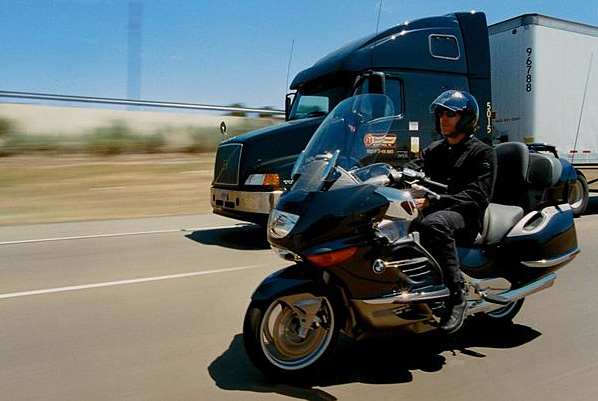
Over
the long term, there don’t seem to have been too many
surprises when it came to reliability. Owners have noted
rear main seals eventually going, which is a pest to
replace but not terminal (ditto the dry clutch), and ABS
sometimes giving up the ghost. BMW’s first couple of
generations of ABS left something to be desired when it
came to long-term reliability, though the systems can be
repaired.
That
said, you also hear of big miles being done on these
things with little drama.
BMW made some running changes along the way, including
updating the brakes to the electric-boosted system used
elsewhere in the range. That was a backward step, in our
view. This was from 2001 and you should check which
version you have before working on, or ordering parts
for, the stoppers.
Honda
meanwhile went and launched the 1800 Gold Wing series in
2001, priced locally at an eye-watering $40,000 (US$30,000, GB£23,000).
This bike had an additional 18 horsepower over its
predecessor and raised the level of competition by a few
notches. It handled much better than the 1500 and in
many respects was more than a match for the K1200LT.
BMW’s
response was to release a MkII K1200LT in 2004, with a
lot of work done to a powerplant that now claimed 116hp
(85kW) at 8000rpm. There were numerous other
refinements, including the option of a powered
centrestand. However this generation wasn’t sold in
Australia, instead the model was killed off altogether
in the local market by 2005.
Though
expensive in its day and at the low volume end of the
showroom, there are a surprising number of used K1200LTs
available, priced around Au$7500-11,500 (US$5600-8600, GB£4300-6600).
When you look at what they offer, they’re tempting in
that they’re now substantially cheaper than the
equivalent Gold Wing.
There
is however a catch. You can expect a K-series of this
era to require rear main seal and clutch replacement at
around 20-25 years regardless of mileage. The LT is
complex and the job can add up to a little over $4000
through a pro workshop. Now if you package that cost and
that of the bike, the LT can still be a very viable
alternative to a GL1800.
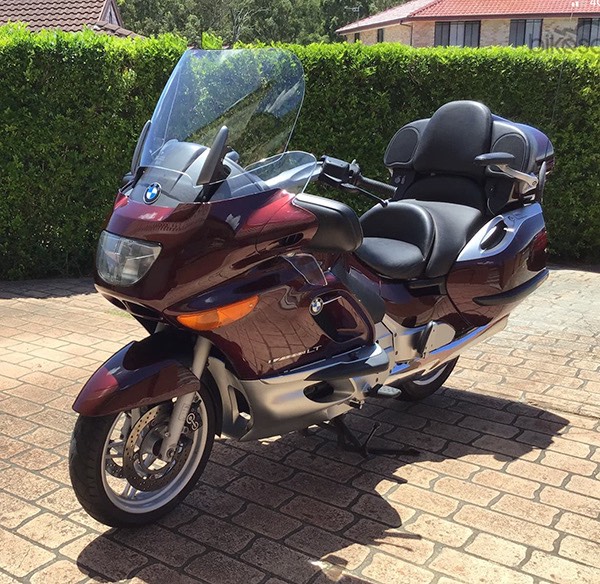
So
tempting that we just bought one. A 1999 model with
under 50,000km on the odo, it cost Au$8500 (US$6400, GB£4900). We
pick it up next month and will let you know how we get
on. Wish us luck!
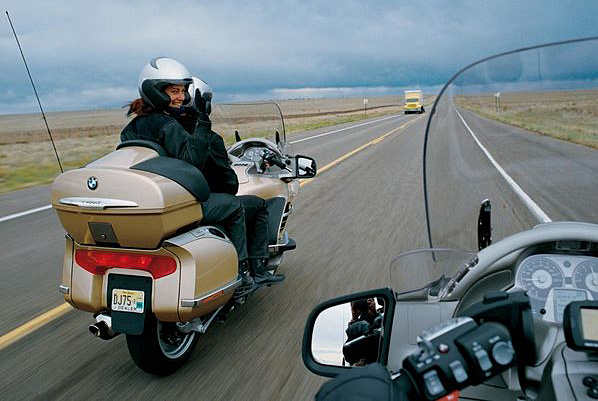
More
reading
Second-gen BMW
K1200LT test at Bennetts
See our K1100LT:
Part 1- the
pick-up ride;
K1200LT
ratings...
Good
Quick
Handles
okay
Lots of
luxury
Not
so good
Not so
well-known as a Wing
SPECS:
BMW
K1200LT
ENGINE:
TYPE:
Liquid-cooled, four-valves-per-cylinder, inline four
CAPACITY:
1172cc
BORE
& STROKE: 75 x 70.5mm
COMPRESSION
RATIO:
10.8:1
FUEL
SYSTEM: Bosch Motronic EFI
TRANSMISSION:
TYPE:
Five-speed, constant-mesh,
FINAL
DRIVE: Shaft
CHASSIS
&
RUNNING GEAR:
FRAME
TYPE: Aluminium bridge with subframe
FRONT
SUSPENSION: Telelever with 35mm stanchion and single
strut
REAR
SUSPENSION: Single-side Paralever with single strut
FRONT
BRAKES: 2 x 320mm discs with 4-piston Brembo calipers
REAR
BRAKE: 285mm disc with 2-piston Brembo caliper
DIMENSIONS
&
CAPACITIES:
DRY/WET
WEIGHT: 345/378kg
SEAT
HEIGHT: 770mm (adjustable)
WHEELBASE:
1627mm
FUEL
CAPACITY: 22lt
TYRES:
FRONT:
120/70-17
REAR:
160/70-17
PERFORMANCE:
POWER:
72kW @ 6750rpm
TORQUE:
115Nm @ 4750rpm
TOP
SPEED: 198km/h
STANDING
QUARTER:
13.3sec
OTHER
STUFF:
NEW
PRICE $32,200 plus on-road costs
-------------------------------------------------
Produced by AllMoto abn 61 400 694 722
Privacy: we do not collect cookies or any other data.
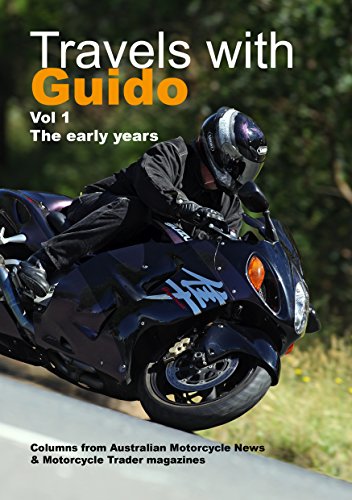
Archives
Contact





